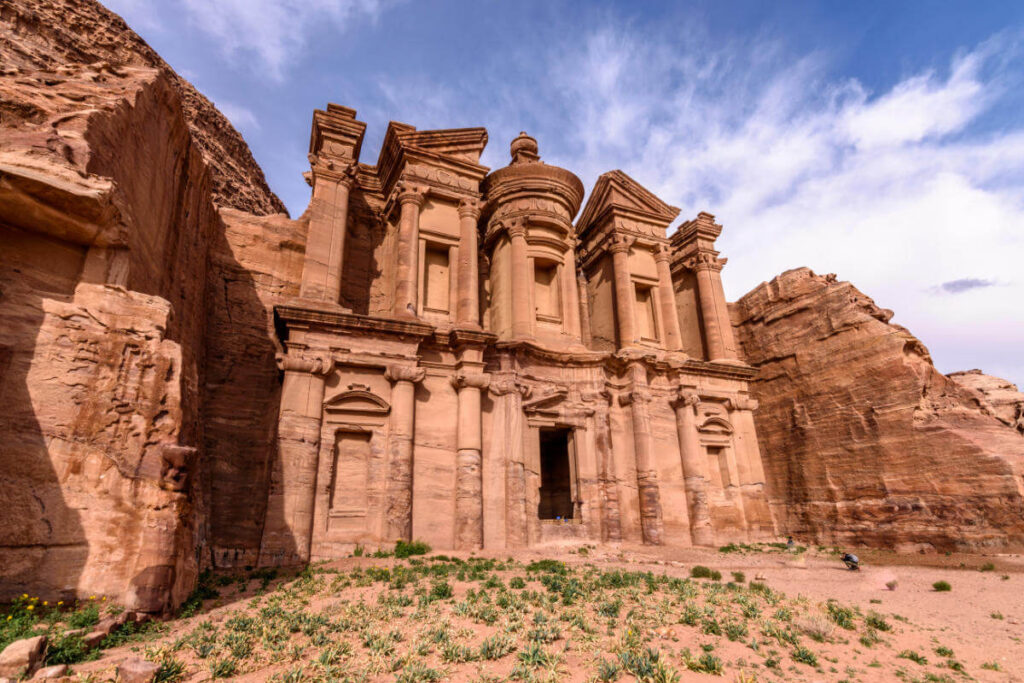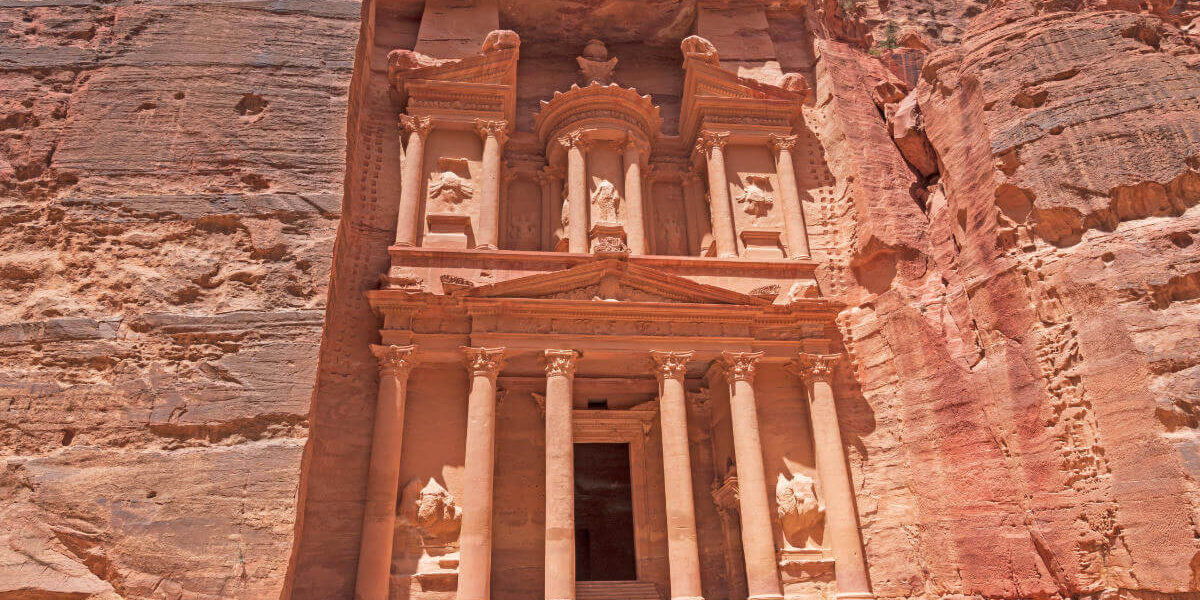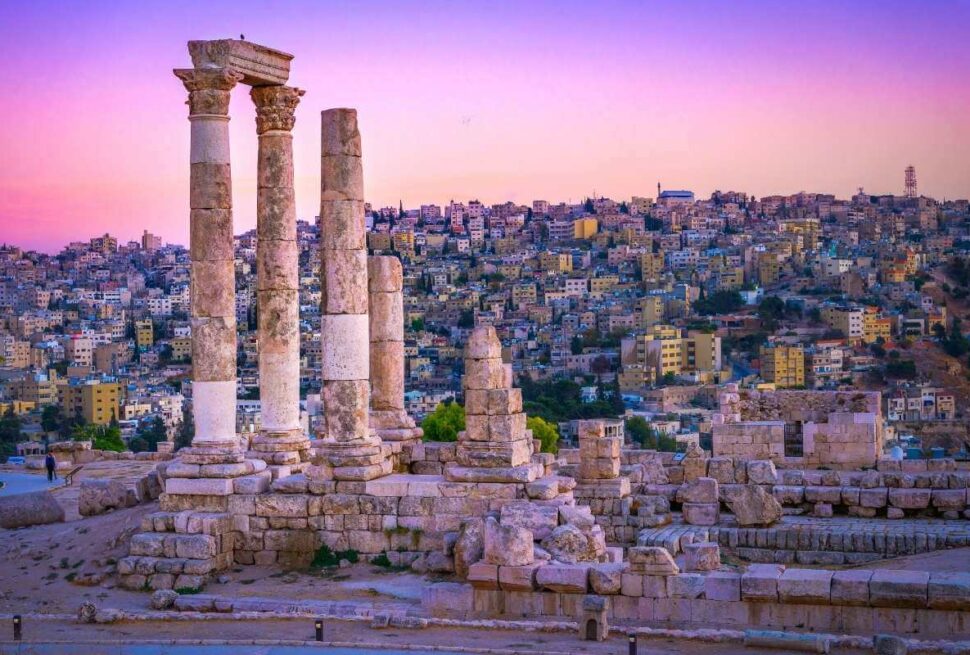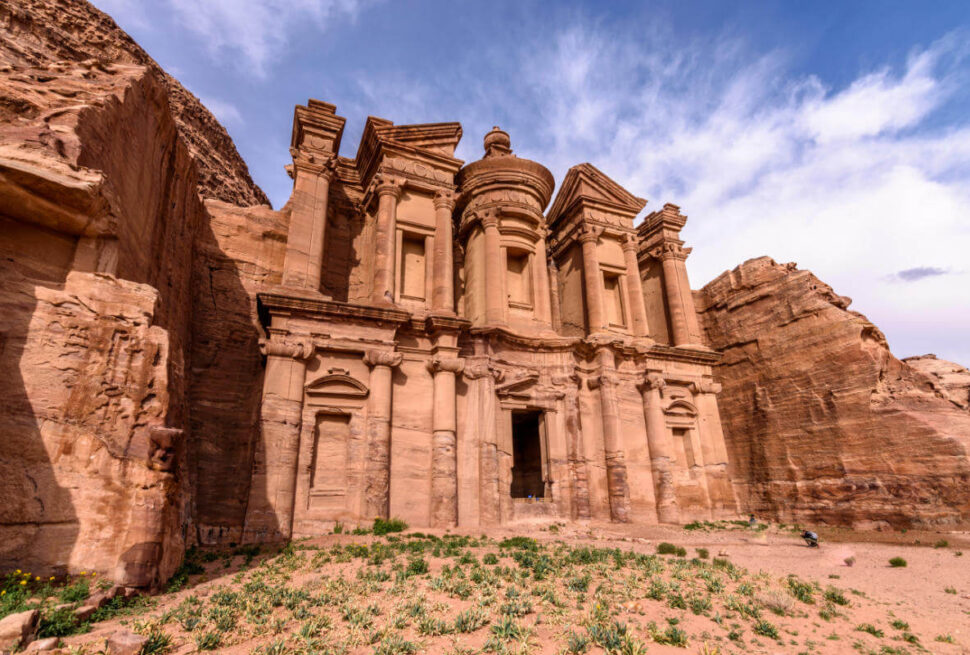Table of Contents
A journey to Petra is like stepping into a living museum of ancient civilization. This guide covers everything you need to know about this world wonder—from its history and geography to travel logistics and insider tips.

Why Petra is a Must-Visit
Often called the “Rose-Red City”, Petra is one of the most iconic archaeological sites in the world. It’s not just a destination—it’s a journey through time. With its rock-cut architecture, majestic monuments, and rich Nabatean heritage, Petra offers an experience that blends natural beauty and human brilliance.
The History of Petra: More Than Just a Pretty Face
Founded in the 4th century BC by the Nabateans, Petra quickly grew into a major trading hub, connecting East and West. The Nabateans were skilled in hydraulics and carving structures directly into cliffs. Petra later came under Roman and Byzantine influence, each civilization leaving behind visible layers of history in the form of temples, roads, and churches.
Geographical Overview: Where Exactly is Petra?
Petra is located in southern Jordan, near the modern town of Wadi Musa. It lies in a desert basin flanked by rugged sandstone cliffs, which provided natural protection and added to the city’s mystique. Today, Petra is a UNESCO World Heritage Site and one of the New Seven Wonders of the World.
How to Get to Petra: Your Journey Begins
Getting to Petra is simple with multiple transportation options:
- Fly into Queen Alia International Airport (Amman)
- Take a 3-hour drive or bus to Wadi Musa
- Many travelers also include Petra as part of a Jordan tour package from Amman, Aqaba, or even Jerusalem
You can choose to explore Petra independently or join a guided tour for a more informative experience.
Best Time to Visit Petra: Seasonal Insights
The ideal time to visit Petra is during spring (March to May) and autumn (September to November). These seasons offer mild weather and fewer crowds. Summers can be extremely hot, while winters are chilly, especially in the early morning.
Discover the Enchanting Beauty of Petra, Jordan: Unveiling Ancient Wonders
Petra’s most famous landmark is Al-Khazneh (The Treasury)—a majestic, rock-carved façade that greets visitors after a walk through the narrow Siq canyon. Other must-sees include:
- Ad-Deir (The Monastery) – Larger than the Treasury and located atop a scenic climb
- The Royal Tombs – A row of majestic tombs carved into the mountainside
- The Roman Theater – A grand reminder of Petra’s diverse cultural influences
- The High Place of Sacrifice – Offering panoramic views and spiritual significance
Petra is vast and layered, so it’s worth exploring at least two days to cover its top sites and hidden trails.
One Nation Travel: Your Gateway to Jordan’s Unforgettable Landscapes
If you’re seeking a seamless and enriching Jordan experience, One Nation Travel offers well-curated tours that include:
- Amman – The capital city rich with Roman ruins and Middle Eastern charm
- Wadi Rum – A Martian-like desert with jeep tours and Bedouin hospitality
- The Dead Sea – Float in the world’s saltiest body of water
- Aqaba – Red Sea coastal city ideal for snorkeling and relaxation
- Jerash – One of the best-preserved Roman cities outside of Italy
Whether you’re on a quick Petra visit or a full Jordan itinerary, One Nation Travel delivers professional, customized experiences.
FAQs: Your Questions Answered
Q: What is the best way to explore Petra?
A: A guided tour is great for history lovers. Independent travelers may prefer hiking at their own pace.
Q: How much time should I allocate for my Petra visit?
A: At least 2 full days to see the main attractions and venture off the beaten path.
Q: Are there any visitor guidelines?
A: Yes. Dress modestly, respect local customs, and avoid touching carvings or straying from marked paths.
Q: What are the must-see landmarks?
A: The Treasury, The Monastery, The Siq, and The Royal Tombs.
Q: Is Petra safe for solo travelers?
A: Yes, Petra is generally safe, especially during daylight hours and with basic precautions.
Q: Is Petra accessible for travelers with mobility issues?
A: While much of Petra requires walking, horse-drawn carriages and limited access paths are available for those with mobility challenges.
Your Unforgettable Journey Awaits
Petra is more than just ruins—it’s a soul-stirring experience that leaves a permanent mark on every traveler’s heart. From its red sandstone cliffs to its ancient spiritual sites, Petra invites you to lose yourself in wonder. Whether you’re wandering through the narrow Siq, gazing at the grandeur of the Monastery, or sipping tea in a Bedouin tent, Petra is where adventure, history, and beauty meet.
Let me know if you’d like to add a Petra tour table or integrate nearby destinations into a multi-country itinerary.



